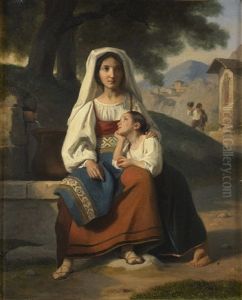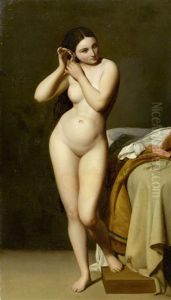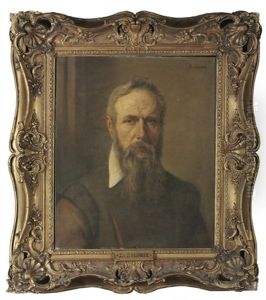Paul Jourdy Paintings
Paul Jourdy was a French artist born in 1805. He was part of the 19th-century European art movement, contributing predominantly to the Romanticism and Realism that defined the period. Jourdy's artistry was deeply influenced by the social changes and the cultural milieu of his time, reflecting the complexities and the aesthetic shifts that characterized the 19th century. Despite not being as widely recognized as some of his contemporaries, Jourdy's work provides valuable insights into the artistic and socio-political narratives of his era.
Jourdy's early life was marked by a rigorous training in the arts, studying under prominent artists of the time, which was a common practice for aspiring painters and sculptors. This foundational period was crucial for Jourdy, as it not only honed his technical skills but also exposed him to a diverse range of artistic philosophies and techniques. His style evolved over the years, showcasing a remarkable ability to capture both the grandeur of Romanticism with its emphasis on emotion and individualism, and the detailed realism that sought to depict subjects truthfully without idealization.
Throughout his career, Paul Jourdy exhibited his works in various salons and galleries, gaining respect and admiration from critics and the public alike. His paintings often depicted scenes of everyday life, landscapes, and historical themes, imbued with a sense of realism and attention to detail. Despite the acclaim, Jourdy's life was not without challenges. Like many artists of his time, he navigated the difficulties of financial instability and the competitive nature of the art world.
Jourdy's contribution to the art world continued until his death in 1856. His legacy, though perhaps not as prominent as some of his peers, remains significant for those who study the nuances of 19th-century French art. His works are preserved in several museums and collections, serving as a testament to his skill and vision. Jourdy's life and art exemplify the vibrancy and dynamism of the Romantic and Realist movements, making him a noteworthy figure in the rich tapestry of French art history.











